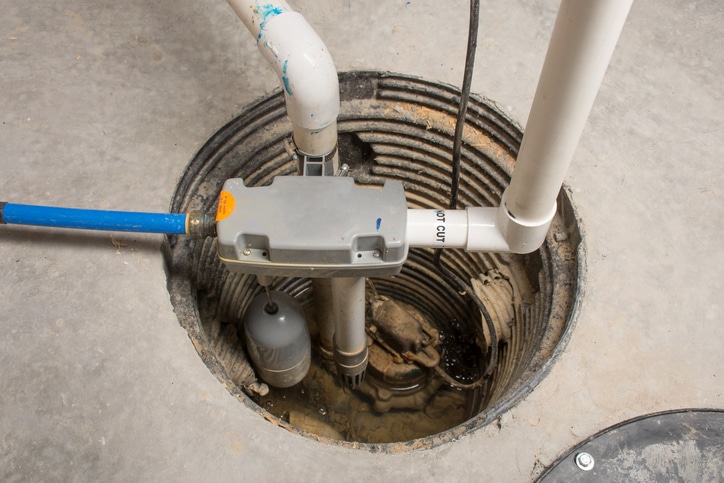How Do Sump Pumps Work?

Central Florida’s tropical climate and heavy rainfall put homes at a serious risk of flooding. A sump pump is a homeowner’s best friend in this battle. Understanding how this critical component operates to remove water before it floods not only allows you to prevent costly damage but also make informed decisions on choosing the right type for your home.
Our expert plumbers at Iceberg Home Services have put together this helpful blog post to explain everything you need to know about how sump pumps work.
Types of Sump Pumps
You may not realize that there are many variations of sump pumps. The two primary types are pedestal and submersible. The main difference between the two is the location of the motor and pump.
As the name suggests, a pedestal system consists of a motor sitting on a pedestal above the basin where the pump is located. This makes them a bit easier to service, and they are also generally a less expensive option. The downside is they can be louder, larger, and not as powerful as a submersible pump.
A submersible sump pump has both the pump and motor submerged in the water basin. The water exposure can mean a shorter lifespan, but their superior strength makes a submersible pump a better choice for homes with a higher flood risk because they can quickly displace more water. A plumbing professional can help you determine the best choice for your situation.
Primary Components of a Sump Pump
Sump pumps are made up of five main parts:
- Pump: Collects and moves water away from your home
- Float switch: Rises along with the water, activating the pump to turn on when it hits a specific level
- Check valve: Keeps water from running back in after it’s been pumped out
- Discharge pipe: Water flows through this from the sump pump to the outdoors
- Sump liner: Collects any excess water that may accumulate
How a Sump Pump Works
A sump pit about 2 feet deep is dug within a basement or crawl space, and the pump is placed inside. When water rises to a certain level within the sump, the float switch triggers the pump’s motor to begin pumping the water out of the pit and through the discharge line. This leads the water outside your home and away from the foundation. Once enough water has been drawn out, the float switch deactivates the sump pump so it’s no longer running. The check valve, located at the base of the discharge pipe, ensures the pumped water doesn’t flow back inside and undo all the pump’s hard work keeping your home nice and dry.
Why Sump Pumps Are Essential for Florida Homes
Since sump pumps are often found in basements, you may be wondering why would they be essential in an area where this feature is so uncommon. The truth is, these systems keep your property safe from mold, mildew, and other water-based damage even if you have no basement. They’re designed to keep water from forming underneath your home in even the smallest spaces, especially crawl spaces. Central Florida’s low elevation and regular rainfall make sump pumps a common and crucial feature in most houses. Those without them face a serious risk of costly water damage.
Schedule Sump Pump Services With Iceberg Home Services
Now that you have a better understanding of their importance, make Iceberg Home Services your sump pump partner! With over 70 years of experience providing Central Florida homes with superior sump pump installation and repair service, we can ensure the job is done right the first time. Plus, with same-day and 24/7 emergency services, our experts are standing by when you need us most.
Contact Iceberg Home Services to schedule sump pump services in Lakeland, Winter Haven, Orlando, or the surrounding areas.
TODAY!




